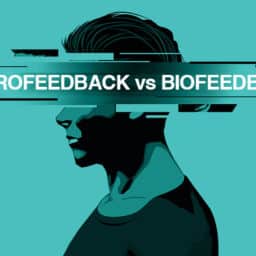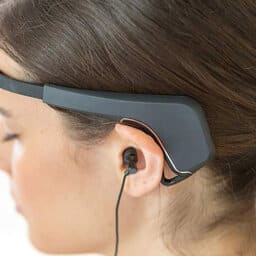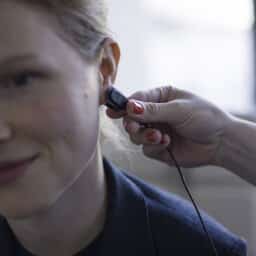
IMPROVE SPORTS PERFORMANCE WITH NEUROFEEDBACK
Whether you love or hate Tom Brady, ya have to respect the resiliency and longevity of his sports performance. Neurofeedback is one of the modalities he uses to holistically hone his athletic performance. As an athlete, his mental toughness and mental preparation are on par with his physical stamina. At LA Neurofeedback Center we have many high-performing clients who found our direct neurofeedback improved their sports performance, similar to Tom Brady’s experience. This blog explores how and why we can improve sports performance with neurofeedback, specifically direct neurofeedback/microcurrent neurofeedback. We will also touch on the benefits of in-home biofeedback in relationship to sports performance. When that extra edge could mean staying at the top of your game while increasing the longevity of your career, it makes sense to holistically do what is reasonable to be your best. The Direct Neurofeedback offered at LANC is an athletic performance solution. Read on to understand the ease of the process and why it works for sports performance.
Physical Performance Benefits of Direct Neurofeedback
Today, a client mentioned she was in the kitchen, lifting a mug from a shelf, when it slipped from her hand. Within seconds, her less-dominant hand reached out and caught it. The immediacy and accuracy of her reflexes amazed her. While relaying this “upgrade” in our session, she also noted that her sports performance training sessions had improved. She had more stamina. It took less exertion to do the workouts. She recovered quicker. Lastly, she said balancing in yoga class was much easier. She did not have to think about it; she just balanced. These physical changes affecting her sports performance began during her 6 foundational direct neurofeedback sessions at LANC. What this client is relaying are first-hand accounts of the benefits of a balanced nervous system. Whether it’s catching a falling glass, or a razor dropped in the shower, we often hear our clients report their reflexes improve as well as their physical balance. In fact, these sports performance benefits are studied and proven effects.
Direct Neurofeedback rapidly relaxes and balances your nervous system, putting you in a calm alert state, training your nervous system to claim state as your baseline. Relaxation facilitates brain function and promotes optimal performance from our muscle fibers to our organ function. It is well-known stress and trauma cause the neuroplasticity of our brain to adapt to a chronic level of fight or flight. Being in fight or flight (aka stress) impairs memory and cognitive function, reduces muscle mass, causes brain cell death, decreases bone density, accelerates aging, and increases errors. Imagine you are about to play a tennis game. In the first scenario you are nervous about the game and your mind is very active. This is you approaching the game in an un-relaxed level of arousal or fight or flight. Fight or flight sabotages sports performance, hence why we call it “choking.”
Now imagine you are about to play a tennis game and you are physically relaxed and mentally calm. The latter option is when you play better. In fact, there are quite a few research studies backing this common sense. For instance, this study shows even a few sessions of neurofeedback in a high performance brain can significantly activate the prefrontal cortical areas associated with increasing confidence in sport performance. This study demonstrates the increase of alpha and beta1 power brain wave frequencies, reduction of reaction times, and improvement in several sports performance measures used to evaluate speed, effectiveness, and work accuracy. These results present support for the use of holistic, neurophysiological training in workouts to enhance sports performance.
Athletes Mental Preparation & Flow State
To outlast in a marathon, you need mental preparation. To have a professional career, you need mental toughness. When we talk about increases in alpha and beta1 brain wave frequencies, we mean calming the mind and increasing concentration. This correlates to mental toughness. For an athlete, mental toughness can define a championship and the longevity of a career. Those who bounce back from a set-back to their sports performance are those who ultimately win. Those athletes who recover from injuries to the spirit as well as the body, are those who become our sports performance heroes. Josh McCown is another professional athlete who found late-career success with neurofeedback positively influencing his sports performance. Josh set career highs in touchdown passes (18), yards (2,926) and completions (267) after beginning his neurofeedback.
At LA Neurofeedback Center, we not only offer our clients direct neurofeedback, we also provide HRV biofeedback for in-home and on-the-road training. Our HRV biofeedback is called HeartMath and is based on over 25 years of scientific research. HeartMath trains a state called Coherence. Coherence is “experienced as a calm, balanced, yet energized and responsive state that is conducive to everyday functioning and interaction, including the sports performance of tasks requiring mental acuity, focus, problem-solving, and decision-making, as well as physical activity and coordination,” says Doc Childre of the HeartMath Institute.
Doc also highlights the important difference between relaxation and coherence: “Relaxation is a low-energy state in which the individual rests both the body and mind, typically disengaging from cognitive and emotional processes. In contrast, coherence generally involves the active engagement of a mentally alert state and positive emotion. Unlike relaxation, the coherence state does not necessarily involve a lowering of heart rate, but rather is primarily marked by a change in the heart rhythm pattern.” Coherence is flow state. Rather than entering flow state only during a good run or a good practice, you can train flow state anywhere using our HRV biofeedback.
Athletic Performance Solutions
New research suggests some stress before an athletic performance is our friend. The adrenaline and cortisol help us jump into action, as Kelly McGonigal’s Ted Talk highlights. Stress becomes an enemy to sports performance when it leads to anxiety (aka dysfunctional fight or flight) and results in depression, or system burn out. We would not be responsible professionals without addressing athletes and mental health, mental preparation, and sports performance anxiety. Extreme physical exertion can be a brain drain, and repeated physical exertion can lead to anxiety and depression, among other mental disorders. If pre-game nerves are sabotaging you, rather than enhancing your sports performance, your stress response is actually anxiety. Direct Neurofeedback helps anxiety.
“Whatever is going on inside your head has everything to do with how well you end up performing.”
― The Art of Mental Training: A Guide to Performance Excellence
Direct Neurofeedback is different from “traditional” neurofeedback with the screen and head cap. Results are quicker and more efficient with Direct neurofeedback. Direct neurofeedback has been around about 15 years, however, was often not readily available to athletes unless you were honing your sports performance in a substantial professional training facility. Since Meg Stuppy founded LANC, she has made direct neurofeedback accessible. When actualizing your best self, start at the root: your nervous system and cognitive function so you are sharp on and off the field. Whether you want to be Tom Brady or want to see him retire, he figured out what works for sports performance and direct neurofeedback is on the list. Try for yourself at LA Neurofeedback Center where doing the direct neurofeedback protocol can help you regain your physical balance, reflexes, mental resiliency and accuracy, adding up to holistically enhanced sports performance.












